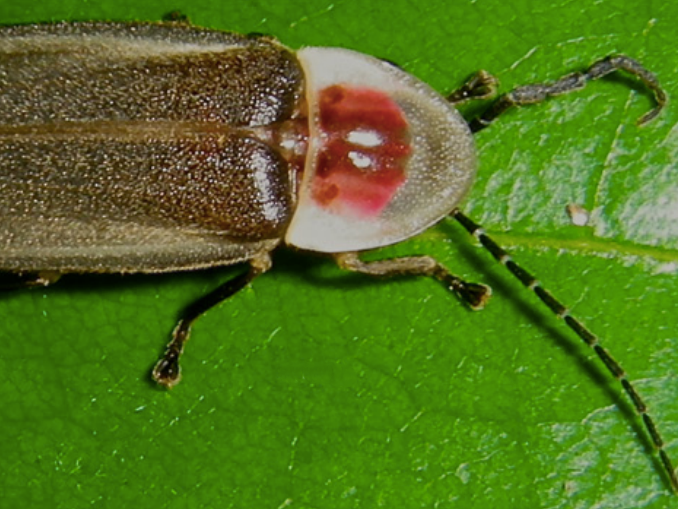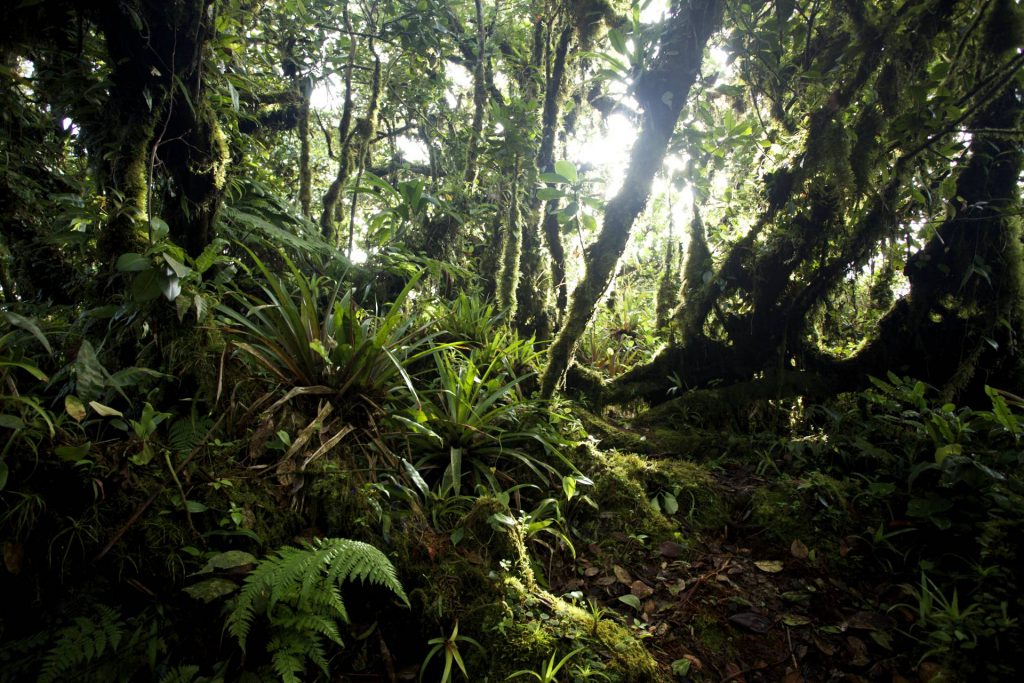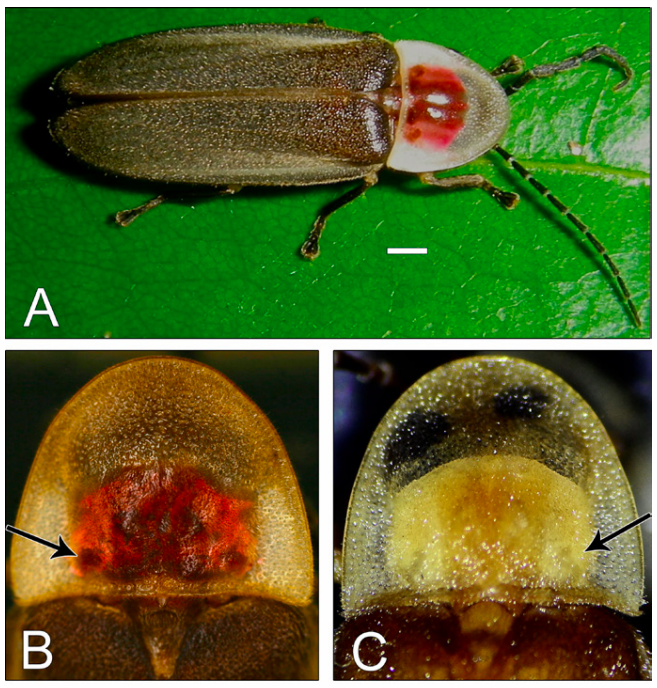Other Species
Bolitoglossa chucantiensis Chucantí Tink Frog
Diasporus majeensis Chucantí Centipede Snake
Tantilla berguidoi Anthurium annularum Anthurium chucantiense Heliconia berguidoi Photinus interdius Quindina kuna Notopleura sallydavidsoniae Diffenbachia mortoniana Neaporia chucanti Syscia austrella Greta Thunberg’s Rainfrog
Pristimantis gretathunbergae Anthurium berguidoi

Photinus interdius

Photinus interdius
Fireflies are well-known for their nocturnal light displays but this new species has a unique approach – it's the first known to flash during the day! Some other fireflies are also active during the day but none of them light up (most have reduced or absent lanterns and use pheromones instead).
Although flashing during the day is probably the method used by the ancestors of modern fireflies, the authors of the paper describing this species suggest that this is likely a recent change for P. interdius. More research is needed to confirm exactly why they prefer to flash during the day, but the current hypothesis is that it likely helps them hide from nocturnal predators such as bats.
Identification
A large beetle (to 24 mm long), with females larger than the males. Coloration varies between the populations in Central Panama and Cerro Chucantí:
- Central Panama: Tan overall, with striped antennae. Its finely perforated pronotum has a wide, pale margin and a narrow medial groove extending halfway to the apex. Two tan stripes follow this medial groove, flanked by two larger, salmon-colored stripes (photo B). The elytra have pale, indistinct stripes that don't quite extend the full length near the outside margins. Final body segment (pygidium) pointed.
- Cerro Chucantí: This population is more yellowish overall, especially in the pronotum where the salmon-colored stripes are yellow instead (photo C). Also, these are smaller than the population in Central Panama, averaging 18 mm long.
Courtship display: Flying males make a loud buzzing sound. See the "Biology and Natural History" section for more details.
Distribution
Pacific slope from Central Panama to the western border of the Darién province (Cerro Chucantí).
Biology and Natural History
Habitat: Lowland rainforest, to 800 m in elevation.
Courtship behavior: Males of P. interdius, like many fireflies, display to females by flashing light while flying. However, this may be the only species to flash during the daytime rather than at night.
During the dry season, males begin displaying around mid-afternoon and stop well before sundown. While displaying, males fly slowly (about walking speed) in a line approximately 1 m above the ground. When they flash, they often abruptly change their flight trajectory to create an upward "J" shape.
When they receive a response, males stop searching and move into the courtship phase: they stop making the "J"-shaped flight and move towards the responding flash. As they near the female, the flashes from the male become dimmer and somewhat more frequent.
Video of the light display of a Photinus interdius male by Dr. Fredric Vencl:
Etymology
From the Latin word "interdius" meaning during the day/by day.
References
 iNat Observations
iNat Observations
- Vencl, F.V., X. Luan, X. Fu, & L.S. Maroja (2017). A day-flashing Photinus firefly (Coleoptera: Lampyridae) from central Panamá: an emergent shift to predator-free space? Insect Systematics & Evolution. (Link)


